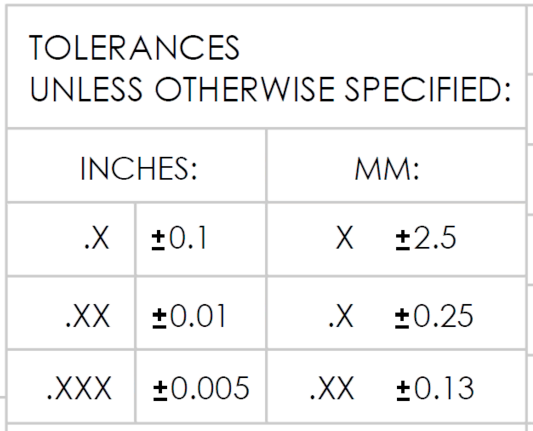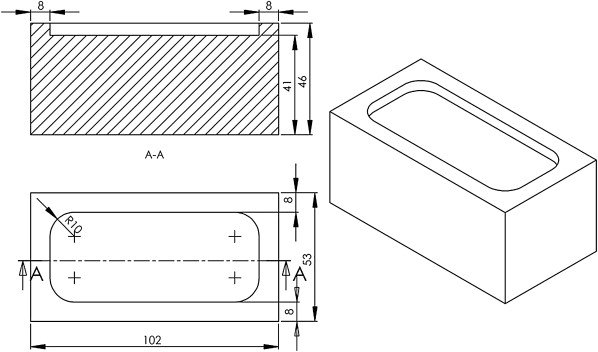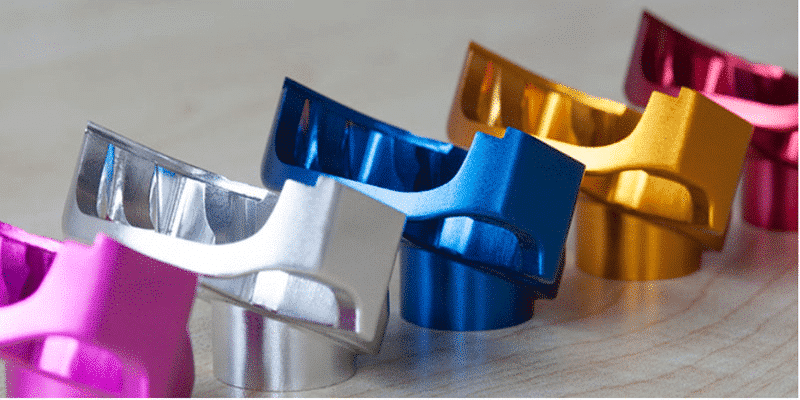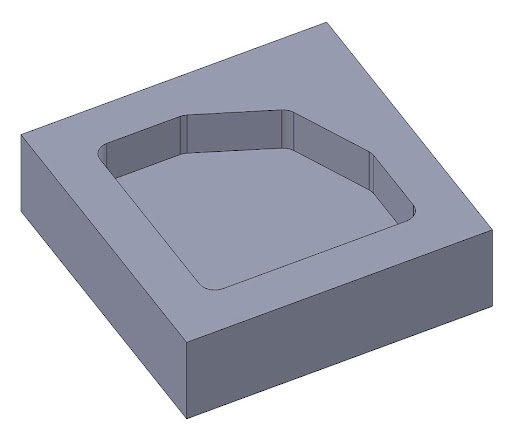CNC (Computer Numerical Control) machining is an automated manufacturing process that uses computer software to control the movement of machines like lathes, mills, grinders, and routers. It enables manufacturers to quickly produce parts with precise dimensions and excellent surface finish quality.
This guide will provide you with all the information you need to know about designing and manufacturing CNC machined parts – from choosing the right material for your project, understanding tolerances and finishes, preparing CAD files for production, and finding a reputable supplier or manufacturer – so you can get started on your next project with confidence!
What are CNC Machined Parts and Their Applications?

CNC machined parts are components that are produced by shaping the raw material with the help of a CNC (Computer Numerical Control) machine. These parts are designed and manufactured according to specific requirements or drawings, and they can be used for a variety of applications such as aerospace, automotive, medical devices, industrial machinery components, and more.
CNC machines are capable of producing complex shapes and components with extreme precision, which makes them ideal for a wide range of industries that require accuracy and reliability. Additionally, CNC machining can be used to produce parts in a variety of materials including steel, aluminum, plastics, composites, wood, titanium, and more.
What are the Main Machining Restrictions for CNC Machined Parts?
These are some of the main restrictions that should be considered when designing CNC machined parts. The chosen tools must adhere to certain restrictions in order to be used with the CNC machine. Below are some considerations when designing CNC parts to avoid the parts which can’t be machined.
Tool Access Restrictions:
When designing CNC machined parts, it is important to consider the tool access restrictions. When machining, the cutting tool always approaches the workpiece from above. It means that the CNC machine can’t process those features or surfaces that cannot be accessed in this way.
Tool Geometry Restrictions:
Here it mainly concerns length and diameter. Most CNC cutting tools have a limited cutting length, depending on the type of tool and machine being used. Similarly, there are restrictions for cutting diameter, meaning that the designer should keep the required details within certain limits.
Tool Size Restrictions:
For example, when you machine the internal corners of a component, there would be inevitably a radius left, because the drill bits’ diameter usually starts from 0.5mm.
Design guidelines for CNC Machined Parts
When designing CNC machined parts, it is important to consider a variety of factors such as the type of material being used, design complexity, tolerances, surface finish requirements, and machine types. The below information provides an overview of some key factors that should be considered when designing and manufacturing CNC machined parts. By taking into account these factors, designers can create components with consistent quality, optimal performance characteristics, and cost-efficiency.
1. Tolerance:

Tolerance is an important factor to consider when designing CNC machined parts. It is the acceptable degree of variation between a part’s actual measurements and its intended specifications. Generally, lower tolerance requirements need more precise tools and machines which can make the production process costlier and slow down the production time.
Generally speaking, the standard tolerance is +-0.005′ if you don’t have special demand. Remember, it’s not necessary to request tight precision for those inessential features, because it’ll highly increase machining time and also machining cost. So, think twice about what sizes are necessary for tight tolerances when designing.
2. Cavities and Pockets:

When designing components with complex shapes, such as cavities or pockets that require deep machining, some restrictions should be taken into consideration. It is important to choose a CNC machine and cutting tool that can access the required features and ensure sufficient clearance for the chips produced by the machining process.
Generally speaking, cutting tools have a limited cutting length, around 3-4 times the diameter. When the depth-width ratio of the cavity is small, tool deflection, chip removal, and vibration will become more prominent.
Besides, It’s suggested that the cavity depth should not exceed 4 times the cavity width. If a bigger depth is required, consider designing parts with variable cavity depths.
3. Material:
The type of material being used is also an important factor to consider when designing CNC machined parts. Different materials have different properties and require specific cutting tools and machines.
For example, machining hard materials such as steel require specialized cutting tools that are able to withstand the high temperatures produced during the machining process. Besides, CNC machines can only process certain types of materials, so designers should make sure that their chosen material is compatible with the CNC machine being used.
4. Surface finish:

After the CNC machining process is complete, it is important to apply finishing processes in order to achieve desired results such as improved appearance and corrosion resistance. Therefore, it is important to consider the required surface finish when designing CNC machined parts.
Depending on the material used, appropriate processes such as anodizing, painting, plating, grinding, or polishing may be needed to achieve the desired result.
Anodizing: Anodizing is an electrochemical process used to create a protective oxide coating on metals such as aluminum, titanium, or magnesium. This coating serves to protect the metal from environmental stress and corrosion while also providing a smooth and attractive finish.
Painting: Painting is a popular finishing technique that can be used to give CNC machined parts a bold and vibrant look. It also serves to protect the parts from corrosion and wear.
Plating: Plating is a process of depositing a thin layer of metal on the surface of CNC machined parts in order to improve their appearance and durability. Commonly used metals for plating include gold, silver, and copper.
Grinding: Grinding is a process of removing small amounts of material from the surface of CNC machined parts in order to achieve a smooth finish. This process is often used for preparation prior to plating or painting.
Polishing: Polishing is a process of removing small imperfections and irregularities on the surface of CNC machined parts in order to achieve a high-gloss finish. This process is usually done by hand or with special polishing machines.
5. Wall Thickness:
Wall thickness is another important factor to consider when designing CNC machined parts. Wall thickness affects the strength of the part, as well as its production costs. Too thin walls can cause issues such as vibration and resonance during machining and too thick walls will add extra cost to the production process due to additional material usage.
It’s recommended that the wall thickness for metals shouldn’t be lower than 0.8mm, while for plastics not lower than 1.5mm. Plastics are more prone to warping and softening, so a larger wall thickness is recommended for better accuracy.
6. Heat Treatment:
Heat treatments can be applied to CNC machined parts in order to improve their physical properties such as hardness, ductility, and strength. Depending on the material being used, appropriate heat treatment processes such as hardening, tempering, and annealing can be applied.
Heat treatments are important for improving the performance of CNC machined parts, and it is important to consider them when designing components.
7. Threads:
Threads can be added to CNC machined parts for a variety of reasons such as connecting two parts together or creating an adjustable part. It is important to consider the type and size of threads when designing CNC machined parts, as different types require different cutting tools and machines. Additionally, it is important to ensure that the thread pitch and tolerance are adequate for the application.
8. Holes:
Holes can be used to reduce weight, as well as to provide clearance and access. When designing CNC machined parts with complex shapes such as holes or slots, it is important to consider factors such as the size and shape of the hole, cutting tool type and speed, depth of cut, and other parameters in order to ensure consistent quality.
9. Text:

Text or other graphics can be added to CNC machined parts for aesthetic purposes. Depending on the complexity of the image or text, different cutting tools and machines may be required in order to achieve the desired results. Furthermore, it is important to consider factors such as font size, text orientation, material type, and finish when designing CNC machined parts with text or graphics.
10. Cost:
The cost of producing CNC machined parts is determined by a variety of factors such as material type and complexity of the part. Designers should make sure that their designs are optimized for production costs, while still meeting the required performance characteristics. It is important to consider cost-saving measures such as minimizing the number of machining operations and reducing part complexity in order to reduce production costs.
11. Internal edges:

Internal edges are important to consider when designing CNC machined parts as they can affect the strength and performance of the part. It is important to choose an appropriate cutting tool and depth of cut in order to ensure that the internal edges meet the desired specifications.
12. Machine types:
In order to produce CNC machined parts with complex shapes or intricate details, it is important to choose the right machine types. Different machines are designed for different tasks and it is important to select the correct one in order to ensure consistent quality and performance.
Lathes: Lathes are ideal for producing cylindrical geometries such as shafts, bushings, and spindles.
Milling Machines: Milling machines are used for producing complex geometries and shapes with intricate details and complex shapes such as slots, pockets, and threads.
EDM Machines: EDM (Electrical Discharge Machining) machines are ideal for creating sharp edges and cutting through hard materials that would otherwise be difficult to machine using standard cutting tools.
Waterjets: Waterjets use high-pressure streams of water to cut complex shapes into materials such as metals and composites.
Drill Presses: Drill presses are used to create precise holes in parts.
13. Undercuts

It’s better to avoid undercuts because these features can’t be machined from standard milling cutters, and we have to order customized machining tools which will increase cost and time.
If there has to be an undercut on your part, there are 2 options for your reference: Firstly, make sure this feature is standard size; Secondly, make sure the depth can be done by machining tools.
14. Small Features
Try to avoid some unnecessary small features while designing CNC machined parts. Small features will cause great difficulties in the manufacturing process and might lead to poor product quality. For example, a tight tolerance on small holes or sharp edges requires special tools and an experienced operator which would increase both the cost and time of production significantly.
Designing CNC machined parts with the right tools, machines, materials, and tolerances will yield consistent results for a successful production. By understanding and considering all of these factors when designing CNC machined parts, companies can ensure that their products meet the desired quality standards and are cost-efficient to produce.
Quality Control Measures for CNC Machining Projects
CNC machining requires precise technical skills and close attention to detail. Quality control measures should be implemented throughout the entire process in order to ensure that parts are manufactured according to design specifications and customer requirements.
Before production starts, the designer should review the part design for accuracy, including adding tolerances where appropriate. During production, quality control measures such as visual inspections, hardness tests, and dimensional measurements should be taken to ensure that parts are within tolerance.
In addition, manufacturers should establish a system for tracking defects and non-conforming parts which will facilitate any corrective actions necessary.
Finally, once production is complete, the parts should be tested to verify their performance characteristics meet design specifications and customer requirements. The often-used measuring equipment includes CMM, projector, height gauge, depth gauge, thread gauge, etc.
By implementing these quality control measures, companies can ensure that their CNC-machined parts are produced to the highest standards of quality.
Conclusion
CNC machining is a precise and repeatable process to manufacture parts from various materials. It requires careful planning, design optimization, and the right machines, tools, and processes in order to achieve consistent quality results. With proper attention to detail during the entire manufacturing process, companies can ensure that their CNC machined parts meet the desired specifications, are cost-efficient to produce, and perform as expected.

